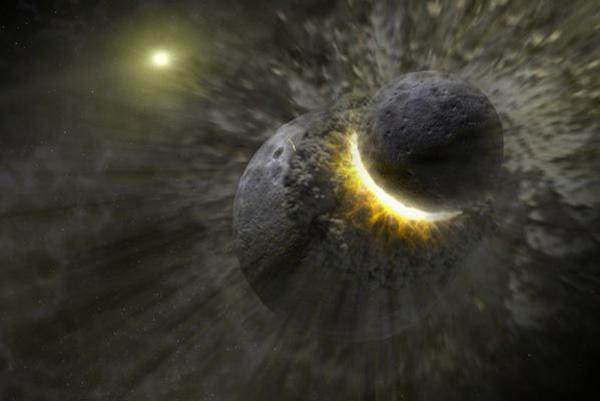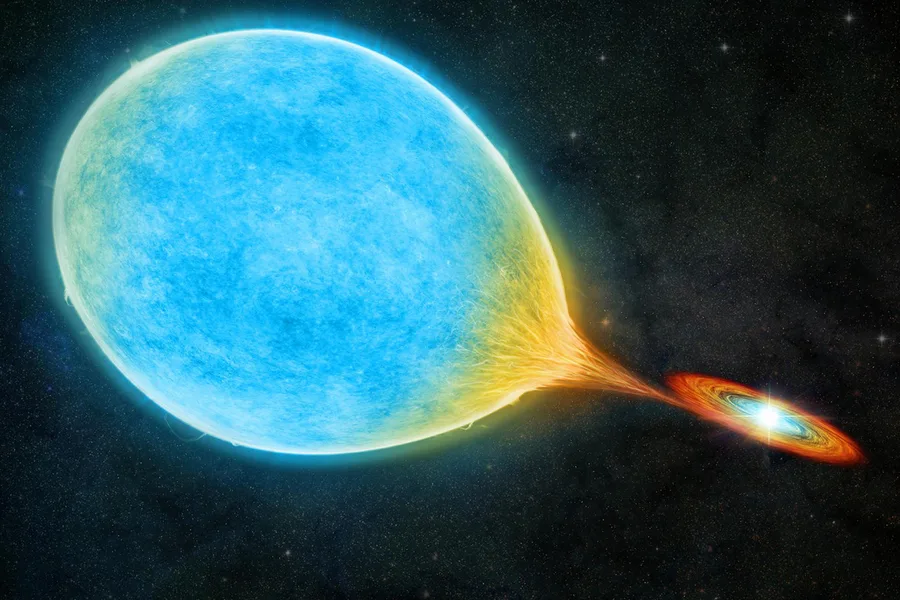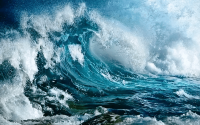Since the mid-1970s, astronomers have believed that the Moon may have been formed by an ancient Mars-sized planet colliding with Earth. gradually formed over time.
But the formation of the moon may not have been a slow and gradual process, but occurred in just a few hours, according to a supercomputer-based simulation study conducted at a higher resolution than ever before. In an article published in the “Astrophysical Journal Letters” magazine on October 4, the latest research results were shown to the world.
Computational cosmologists at Durham University in the United Kingdom say it is difficult to predict how much resolution is needed to reliably simulate these violent and complex collisions until it is found that further increases in resolution no longer have an impact on the answer. The need for research has been met.
In July 1969, the Apollo 11 mission returned, when NASA astronauts Neil Armstrong and Buzz Aldrin brought about 21 kilograms of lunar rock and soil samples back to Earth, the first time scientists Obtained the first clue after the birth of the moon. Through in-depth testing and analysis of these samples, scientists have determined that the history of these samples can be traced back to about 4.5 billion years ago, which is the “Great Turbulence” period of about 150 million years after the formation of the solar system.
Other clues suggest that our largest natural satellite, the Moon, was born from a violent collision between Earth and a hypothetical planet that scientists named after the mythical Greek Titan Theia (mother of the moon goddess Selene). planet. This evidence includes similarities in the rock composition of the Moon and Earth; the Earth’s rotation and the Moon’s orbit have similar orientations; the high combined angular momentum of the two bodies; and the existence of debris disks in parts of our solar system, among others.
But exactly how the cosmic collision happened is up for debate. Conventional assumptions suggest that when Theia collided with Earth, a massive destructive impact shattered Theia into millions of pieces, turning it into floating “rubble.” The shattered remains of Theia, along with some vaporized rock and gas torn from our young planet’s mantle, slowly mixed into a disk around which the moon’s molten sphere coalesced and cooled by millions year.
However, some parts of this imaginary picture have remained elusive to this day. An open question is, if the Moon consists primarily of Theia, why do many of its rocks bear such a striking resemblance to those found on Earth? Some scientists believe that more evaporating rocks from Earth made their way to the Moon than the shattered remnants of Theia, but that idea raises a new question of why other models suggest it’s mostly composed of Earth’s shattered rock The moon would have a very different orbit than what we currently see.
To study different possible scenarios for the formation of the moon after a collision, the scientists involved in the new study turned to a computer program called SPH, with interdependent fine-grained tasks designed to closely simulate complex and constantly changing The gravitational network of and the hydrodynamic forces acting on a large amount of matter. For the purpose of the study, the scientists used a supercomputer to run the program, a system called COSMA (short for “Cosmology Machine”) at Durham University’s Distributed Research Utilizing Advanced Computing Facility.
Using the COSMA system, scientists simulated hundreds of Earth-Theia collision scenarios, where the three parameters of angle, rotation and speed were different, and then calculated the outcome of the collision under different scenarios and determined the outcome An important indicator of accuracy is the resolution used for the simulation, which is determined by the number of particles used in the simulation. Standard simulation resolutions typically range from 100,000 to 1 million particles for this massive impact, but in this new study, the research team was able to simulate as many as 100 million particles. The obvious benefit of this is the ability to study more detail, just as using a larger telescope to take higher-resolution images of distant planets or galaxies can uncover new details.
In hundreds of simulations, higher-resolution simulations left researchers with a ‘different’ moon, one that was ejected from Earth in a matter of hours, with debris from Theia Formation, this simulation provides additional answers to the visible properties of the Moon and fits well with some parameters of existing observations of the Moon, such as the Moon’s inclined orbit, partially molten interior, and thin lunar crust.
Then, for the verification of this simulation result, the rock and dust samples excavated from the depths of the lunar surface need to be finally checked, which has also become the key task of NASA’s future Artemis mission and my country’s Chang’e follow-up lunar exploration project. More samples from the lunar surface could be very helpful in making new and more confident discoveries about the moon’s composition and evolution, as the scientists involved in the study said.
That is to say, the more samples we humans obtain from the moon in the future, the more we can help humans rule out more possibilities for the formation of the moon, narrow down the actual history of the moon and the earth, and finally leave several possibilities closer to history. the truth.




GIPHY App Key not set. Please check settings